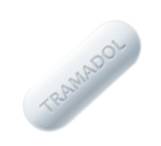HEALTH WITH HIFAD : TRAMADOL
TRAMADOL AND ITS HEALTH EFFECTS.
Tramadol is an opioid, opioids are potent painkillers that are also used for recreational purposes because they give users a feeling of pleasure that can be habit-forming. Research and statistics suggest that since tramadol is an opioid (with partial action on brain receptors), the risk of dependence exists with long-term consumption.
What are some signs of tramadol abuse?
Tramadol is a prescription painkiller and most individuals who get addicted to it are the ones who consume it for relief of chronic pain syndromes. However, with frequent use, most people unintentionally develop addiction.
You can also assess your addiction or dependence status by analyzing these signs:
Consumption of tramadol in doses that are higher than the recommended dosage
Increasing the dosage without physician's approval
An inability to decrease the dose or stop the consumption altogether
Development of withdrawal symptoms with the non-availability of drug
What are some common withdrawal symptoms reported with tramadol addiction?
The biggest limiting factor that prolongs the duration of addiction and makes an ordinary case of dependence into a complicated addiction is that the withdrawal symptoms are fairly similar to morphine and codeine withdrawal.
These include:
Uncontrollable shaking and tremors
Moderate restlessness (similar to restless leg syndrome) marked by tossing and turning in bed
Aggressiveness, anxiety, agitation, and depression marked by crying spells
Painful muscle contractions
Trouble falling asleep or maintaining sleep, vivid dreaming
Sneezing, coughing, nasal stuffiness, and headaches
Problems with vision marked by watery eyes, double vision
Changes in normal cardiac rhythm and palpitations
What should you know about tramadol addiction?
Tramadol addiction is both physical and psychological. With proper management and treatment, physical dependence may be treated but it is very difficult to treat psychological dependence.
Tramadol dependence is a problem. Instead of quitting the drug altogether, seek the help of a healthcare professional.
For best results, use tramadol infrequently and in the recommended dosage only. Even within the recommended dosage, seizure activity may be reported in some susceptible individuals.
How can you minimize the risk of tramadol addiction?
Tramadol is not an ordinary painkiller. Based on its potency, efficacy, and duration of action, it can be a palliative form of therapy, one that is reserved for cases where there is no cure or treatment available like terminal cancer. Before starting on the drug, you should know the necessary information regarding dosage, duration of treatment, possible side effects, possible interaction with food, and storage instructions. It is an ideal therapy for acute painful conditions. Since it is superior to other opioids, it can also be administered under supervision for chronic use.
Short-Term Effects of Tramadol
Tramadol works by modifying the processing of pain signals traveling between the nerves and the brain. However, it has several different targets in the nervous system—each imparting contributions to tramadol's pain relieving and, sometimes, mood altering properties. However, two well-known effects of tramadol are considered to be the most relevant for its ability to relieve pain and encourage abuse.First, like heroin, codeine, and all other opiate analgesics, tramadol binds to opioid receptors in the brain and spinal cord. These receptors are responsible for both the pain-relieving effects that patients need and, at higher doses, the euphoric effects that abusers seek.
Short-term effects of tramadol include:
Lack of pain. Tramadol is a painkiller; it modifies the transmission of pain signals to the brain so that you experience less intense pain while you are taking it.
Elated mood. Tramadol works in a similar way to many antidepressant medications in that it increases the levels of serotonin and norepinephrine in your brain. This may lead to feelings of euphoria and well-being. For some individuals, these pleasant symptoms serve to reinforce a pattern of continued tramadol use.
Anxiety reduction. Tramadol helps some users feel relaxed and calm because of the way it changes brain chemistry.
These symptoms and signs can contribute to a developing tramadol addiction, especially if the individual in question is concurrently experiencing depression and/or anxiety issues.
LONG TERM EFFECTS OF TRAMADOL
Tolerance: As tramadol works by changing a person's brain chemistry, there is a risk of developing tolerance to this drug. As the body adapts to tramadol's presence, users need larger doses of the drug to feel its painkilling and euphoric effects.
Physical dependence: Along with tolerance, many users experience physical dependence if they use tramadol for a long period of time. Their bodies adapt to the presence of the drug, and soon require tramadol in order to function properly. If a dependent individual stops taking tramadol, they may become physically ill due to the onset of a withdrawal syndrome.
Cognitive decline: Many opioid drugs are associated with cognitive impairment and slowed reaction times. Complex tasks may become more difficult with long-term use of tramadol, and users may present a danger to themselves or others when driving.
Side Effects of Tramadol
Some potential side effects of tramadol include:
Dizziness.
Difficulty falling asleep.
Headache.
Constipation.
Diarrhea.
Loss of appetite.
Sweating.
Dry mouth.
Tremulousness.
Nausea.
Other serious reported side effects that require medical attention include:
Fever.
Hives, blisters, or rash.
Difficulty swallowing or breathing.
Hallucinations.
Agitation.
Lack of coordination.
Rapid heartbeat.
Tramadol Overdose
Those who abuse tramadol for recreational purposes or who have developed tolerance after taking it for some time may take greater doses than recommended and are at increased risk for overdose.
Symptoms of tramadol overdose include:
Decreased pupil size (pinpoint pupils).
Slowed breathing.
Slowed or irregular heartbeat.
Cold, clammy skin.
Seizure.
HIFAD
Post By: Peter Olamide
Fb- olamide ola peters
Ig- ola peters
Follow the tellrhodes blog
Social media handles:
Instagram: tellrhodesblog
Facebook: The Tellrhodes Blog
Twitter: tellrhodesblog
Gmail: tellrhodes@gmail.com
www.tellrhodess.blogspot.com




Comments
Post a Comment